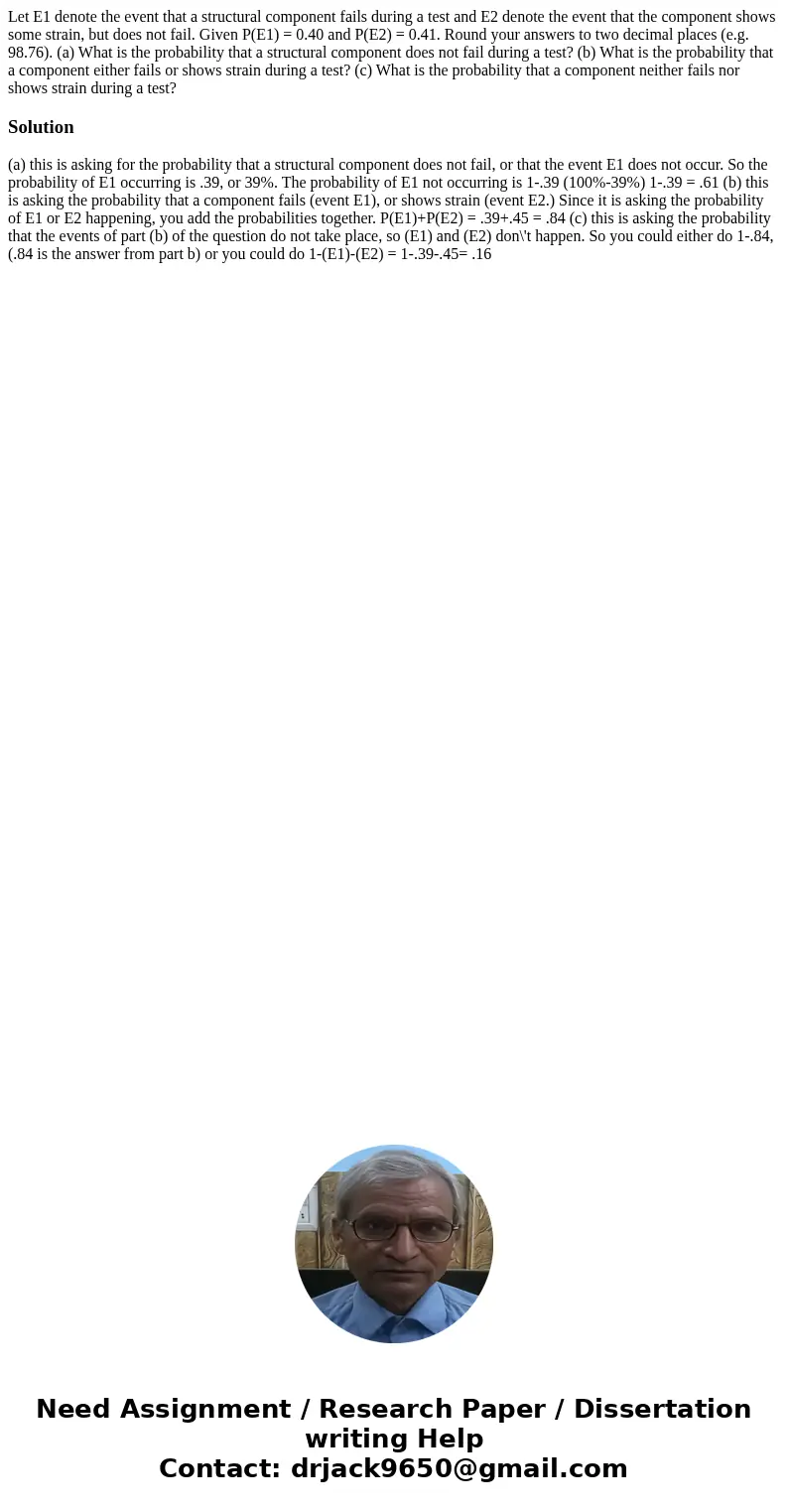Let E1 denote the event that a structural component fails du
Let E1 denote the event that a structural component fails during a test and E2 denote the event that the component shows some strain, but does not fail. Given P(E1) = 0.40 and P(E2) = 0.41. Round your answers to two decimal places (e.g. 98.76). (a) What is the probability that a structural component does not fail during a test? (b) What is the probability that a component either fails or shows strain during a test? (c) What is the probability that a component neither fails nor shows strain during a test? 
Solution
(a) this is asking for the probability that a structural component does not fail, or that the event E1 does not occur. So the probability of E1 occurring is .39, or 39%. The probability of E1 not occurring is 1-.39 (100%-39%) 1-.39 = .61 (b) this is asking the probability that a component fails (event E1), or shows strain (event E2.) Since it is asking the probability of E1 or E2 happening, you add the probabilities together. P(E1)+P(E2) = .39+.45 = .84 (c) this is asking the probability that the events of part (b) of the question do not take place, so (E1) and (E2) don\'t happen. So you could either do 1-.84, (.84 is the answer from part b) or you could do 1-(E1)-(E2) = 1-.39-.45= .16
 Homework Sourse
Homework Sourse